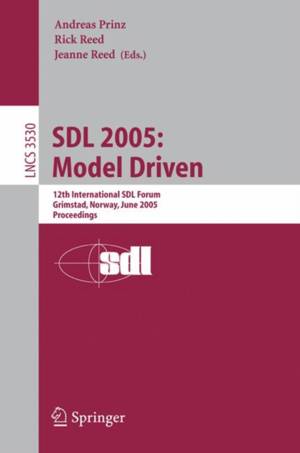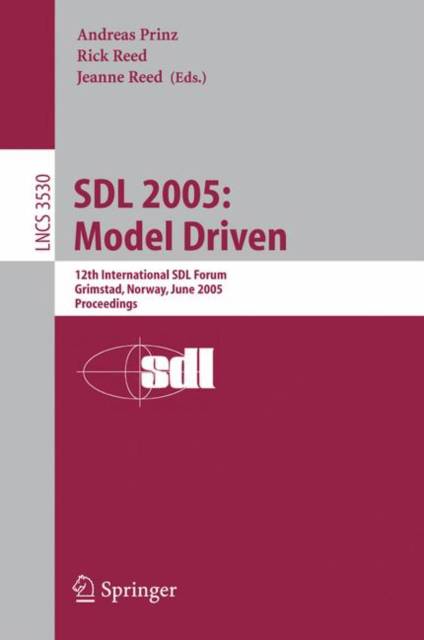
- Afhalen na 1 uur in een winkel met voorraad
- Gratis thuislevering in België vanaf € 30
- Ruim aanbod met 7 miljoen producten
- Afhalen na 1 uur in een winkel met voorraad
- Gratis thuislevering in België vanaf € 30
- Ruim aanbod met 7 miljoen producten
Zoeken
Sdl 2005: Model Driven
12th International Sdl Forum, Grimstad, Norway, June 20-23, 2005, Proceedings
Paperback | Engels | Lecture Notes in Computer Science | Computer Communication Networks and Telecommunications | nr. 3530
€ 95,45
+ 190 punten
Omschrijving
This volume contains the papers presented at the 12th SDL Forum, Grimstad, Norway. The SDL Forum was ?rst held in 1982, and then every two years from 1985. Initially the Forum was concerned only with the Speci?cation and Description Language that was ?rst standardized in the 1976 Orange Book of the Inter- tional Telecommunication Union (ITU). Since then, many developments took place and the language has undergone several changes. However, the main underlying paradigm has survived, and it is the reason for the success of the Speci?cation and Description Language in many projects. This paradigm is based on the following important principles of distributed - plications: Communication: large systems tend to be described using smaller parts that communicate with each other; State: the systems are described on the basis of an explicit notion of state; State change: the behavior of the system is described in terms of (local) changes of the state. The original language is not the only representative for this kind of paradigm, so the scope of the SDL Forum was extended quite soon after the ?rst few events to also include other ITU standardized languages of the same family, such as MSC, ASN.1 and TTCN. This led to the current scope of System Design Languages coveringallstagesofthedevelopmentprocessincludinginparticularSDL, MSC, UML, ASN.1, eODL, TTCN, and URN. The focus is clearly on the advantages to users, and how to get from these languages the same advantage given by the ITU Speci?cation and Description Language: code generation from high-level speci?cations.
Specificaties
Betrokkenen
- Uitgeverij:
Inhoud
- Aantal bladzijden:
- 364
- Taal:
- Engels
- Reeks:
- Reeksnummer:
- nr. 3530
Eigenschappen
- Productcode (EAN):
- 9783540266129
- Verschijningsdatum:
- 9/06/2005
- Uitvoering:
- Paperback
- Formaat:
- Trade paperback (VS)
- Afmetingen:
- 156 mm x 234 mm
- Gewicht:
- 530 g

Alleen bij Standaard Boekhandel
+ 190 punten op je klantenkaart van Standaard Boekhandel
Beoordelingen
We publiceren alleen reviews die voldoen aan de voorwaarden voor reviews. Bekijk onze voorwaarden voor reviews.







